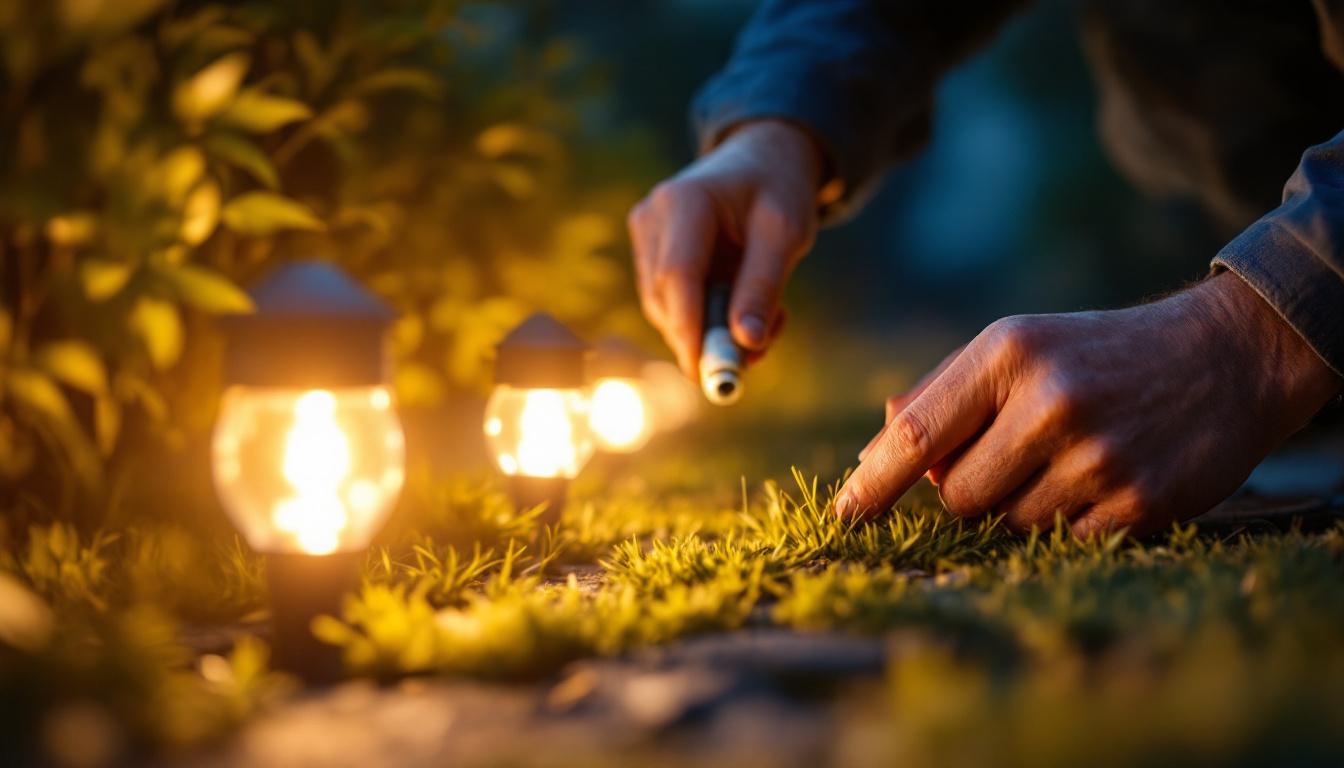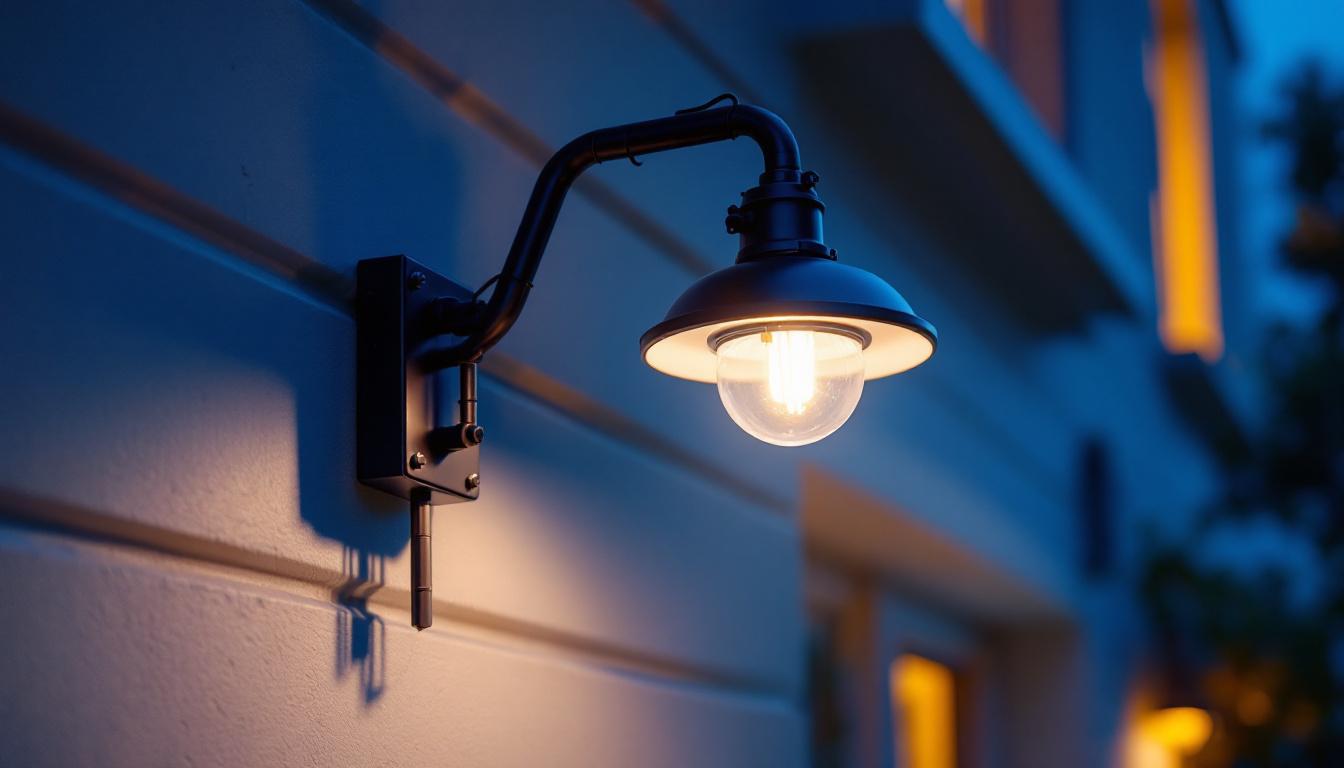
Lighting contractors play a crucial role in enhancing outdoor spaces through effective landscape lighting. One of the often-overlooked components of this process is the use of landscape light connectors. Understanding the various types of connectors, their applications, and best practices can significantly improve the efficiency and quality of lighting installations. This article delves into the essential points that lighting contractors should consider when working with landscape light connectors.
Landscape light connectors are essential components that facilitate the connection between lighting fixtures and the power supply. They ensure that electrical currents flow smoothly, allowing for the seamless operation of outdoor lighting systems. These connectors come in various types, each serving specific purposes and offering distinct advantages.
There are several types of connectors that lighting contractors should be familiar with. The most common types include wire nuts, crimp connectors, and quick-connect connectors. Each type has its own set of characteristics that make it suitable for different applications.
Wire nuts are often used for joining multiple wires together. They provide a secure connection and are easy to use, making them a popular choice among contractors. Crimp connectors, on the other hand, are ideal for situations where a more permanent connection is needed. They require a crimping tool for installation, ensuring a tight fit that can withstand outdoor conditions.
Quick-connect connectors are designed for ease of use and speed. They allow for quick installation and removal, making them ideal for temporary setups or when fixtures need to be replaced frequently. Understanding the strengths and weaknesses of each type can help contractors choose the right connector for their specific projects.
Outdoor lighting systems are exposed to various weather conditions, making weather resistance a crucial factor in choosing connectors. Connectors must be able to withstand moisture, temperature fluctuations, and UV exposure without degrading over time. Contractors should look for connectors that are specifically designed for outdoor use, as these will typically feature materials that resist corrosion and fading.
Using weather-resistant connectors not only enhances the longevity of the lighting system but also reduces the risk of electrical failures. A reliable connection is essential for maintaining consistent lighting and ensuring the safety of the installation. Additionally, connectors with enhanced weather resistance often come with features such as gaskets or seals that further protect the electrical connections from water intrusion, which can lead to short circuits or other electrical hazards.
Moreover, the choice of connector can also impact the overall aesthetic of the landscape lighting design. For instance, connectors that are less obtrusive can help maintain the visual appeal of the outdoor space, allowing the lighting fixtures to shine without distracting from the surrounding environment. This is particularly important in residential settings where homeowners desire a harmonious blend of functionality and beauty in their outdoor lighting schemes. By selecting the right connectors, contractors can ensure that the lighting not only performs well but also complements the landscape design effectively.
Proper installation techniques can significantly impact the performance and durability of landscape lighting systems. Following best practices when working with connectors can help ensure that installations are both efficient and reliable.
Before connecting any wires, it is essential to prepare them adequately. This includes stripping the insulation to expose the copper wire and ensuring that the ends are clean and free from corrosion. A clean connection is vital for optimal conductivity and can prevent potential issues down the line.
Contractors should also consider the length of the stripped wire. Too much exposed wire can lead to short circuits, while too little can result in a weak connection. A good rule of thumb is to strip just enough insulation to allow for a secure connection without excess wire being exposed. Additionally, using a wire stripper with adjustable settings can help achieve consistent results, minimizing the risk of damaging the wire itself during the process.
Once the wires are prepared, securing the connections properly is the next step. Whether using wire nuts, crimp connectors, or quick-connect options, ensuring that connections are tight is essential. Loose connections can lead to flickering lights or complete failures, which can be frustrating for both contractors and clients.
For wire nuts, twisting them securely is crucial. For crimp connectors, using the right crimping tool will ensure a solid bond. Quick-connect connectors should be pushed firmly to ensure a complete connection. Taking the time to secure connections properly can save time and resources in the long run. Furthermore, it is advisable to use heat shrink tubing over the connections for added protection against moisture and environmental factors, which can significantly extend the lifespan of the installation. In outdoor settings, where exposure to the elements is inevitable, this additional layer of security can be a game changer, preventing corrosion and ensuring that the lighting system remains functional for years to come.
Even with careful planning and execution, challenges can arise during the installation of landscape lighting systems. Being prepared for common issues can help contractors navigate these challenges effectively.
One of the most common challenges in outdoor lighting installations is moisture ingress. Water can enter connectors, leading to corrosion and electrical failures. To combat this issue, contractors should ensure that all connectors are rated for outdoor use and are properly sealed.
Additionally, using heat shrink tubing over connections can provide an extra layer of protection against moisture. This tubing shrinks when heated, creating a tight seal around the connection and preventing water from entering. Furthermore, it’s advisable to regularly inspect these connections as part of routine maintenance, especially after heavy rainfall or storms, to ensure that no moisture has compromised the integrity of the system.
Wire damage can occur due to various factors, including animal activity, weather conditions, or accidental cuts during landscaping. To minimize the risk of damage, contractors should bury wires at an appropriate depth and use conduit where necessary. This not only protects the wires but also helps maintain the aesthetic appeal of the landscape.
In cases where wire damage does occur, having a plan for quick repairs is essential. Keeping spare connectors and tools on hand can facilitate prompt fixes, ensuring that lighting systems remain operational. Additionally, utilizing wire mesh or protective tubing can deter animals from gnawing on the wires, while also providing a safeguard against the elements. Educating clients about the importance of avoiding heavy foot traffic in certain areas can further help in preserving the integrity of the installation.
Another challenge that often arises during landscape lighting installations is power supply issues. Insufficient power can lead to dim lighting or flickering, which not only affects the visual appeal but can also indicate underlying electrical problems. To address this, contractors should assess the power requirements of the entire lighting system before installation, ensuring that the transformer is adequately sized to handle the load.
Moreover, it is beneficial to use LED fixtures, which are more energy-efficient and require less power than traditional bulbs. This not only reduces the strain on the electrical system but also extends the lifespan of the lighting fixtures. Regularly checking the transformer and ensuring that it is functioning properly can help prevent power-related headaches down the line, allowing for a seamless outdoor lighting experience.
Selecting the appropriate connector for each project is a critical decision that can influence the overall success of the installation. Factors such as the type of lighting fixtures, the environment, and the specific requirements of the project should all be considered.
Different lighting fixtures may require different types of connectors. For example, low-voltage fixtures often use quick-connect connectors, while higher-voltage systems may benefit from crimp connectors. Understanding the compatibility of connectors with specific fixtures is essential for ensuring a reliable and efficient installation.
Contractors should also consider the manufacturer’s recommendations when selecting connectors. Many manufacturers provide guidelines on the best connectors to use with their products, which can help streamline the installation process and enhance performance.
The environment in which the lighting system will be installed can significantly impact connector selection. Areas with high humidity, saltwater exposure, or extreme temperatures may require connectors with specific ratings to ensure durability and performance.
Contractors should assess the environmental conditions of each project site and choose connectors that are designed to withstand those conditions. This proactive approach can prevent future issues and ensure that the lighting system remains functional for years to come.
Even with the best installation practices, maintenance is essential for ensuring the longevity of landscape lighting systems. Regular inspections can help identify potential issues before they become significant problems.
Conducting regular inspections of landscape lighting systems can help contractors catch issues early. This includes checking connectors for signs of corrosion, ensuring that wires are intact, and verifying that fixtures are functioning correctly.
During inspections, contractors should also look for any signs of moisture ingress or damage caused by environmental factors. Addressing these issues promptly can prevent more extensive repairs down the line and maintain the aesthetic appeal of the landscape.
When issues do arise, having a systematic approach to troubleshooting can save time and resources. Common problems such as flickering lights or complete outages can often be traced back to faulty connections or damaged wires.
Contractors should start by checking the connectors and ensuring that they are secure. If the problem persists, inspecting the wires for damage or breaks is the next step. In many cases, addressing these basic issues can resolve the problem without the need for extensive repairs.
Landscape light connectors are a vital component of any outdoor lighting system. Understanding the different types of connectors, their applications, and best practices for installation can significantly enhance the quality of lighting installations. By being proactive in selecting the right connectors, addressing common challenges, and maintaining systems, lighting contractors can ensure that their projects are both successful and enduring.
As the demand for outdoor lighting continues to grow, staying informed about the latest developments in landscape light connectors will provide contractors with a competitive edge. By prioritizing quality and reliability in every installation, lighting contractors can build a reputation for excellence in their field.
Ready to elevate your landscape lighting projects with connectors that match your commitment to quality and reliability? Look no further than LumenWholesale. Our extensive selection of spec-grade lighting products ensures that you have access to the best connectors on the market, all at unbeatable wholesale prices. Say goodbye to local distributor markups and hello to superior lighting products that meet the highest industry standards. With LumenWholesale, bulk buying is a breeze, and with free shipping, you can rest assured that you’re getting premium lighting at the best value — without any hidden fees. Don’t compromise on quality or affordability. Wholesale Lighting at the Best Value is just a click away. Experience the LumenWholesale difference today!

Discover how outdoor light mounting brackets play a crucial role in enhancing safety and stability in lighting installations.

Discover essential insights into using light diffuser tape effectively with our expert tips tailored for lighting contractors.

Discover the top strategies lighting contractors use to transform gardens with solar lights.

Discover how LED high bay lighting is revolutionizing the industrial sector, offering lighting contractors unparalleled efficiency, durability, and cost savings.